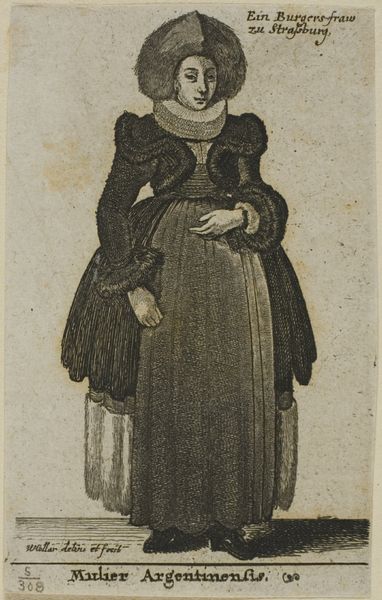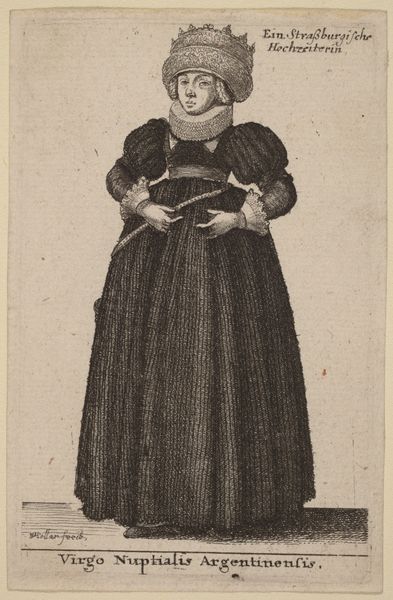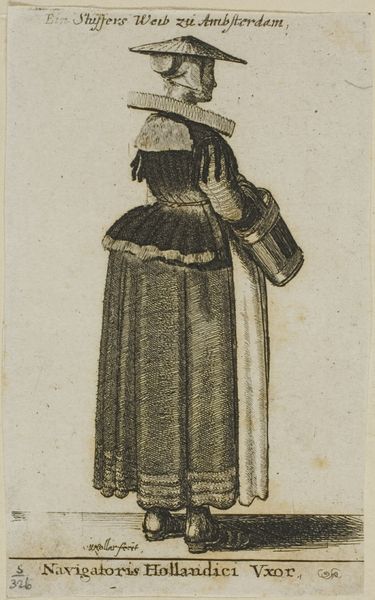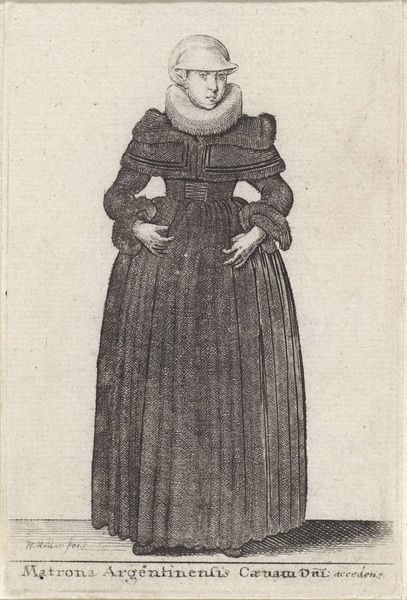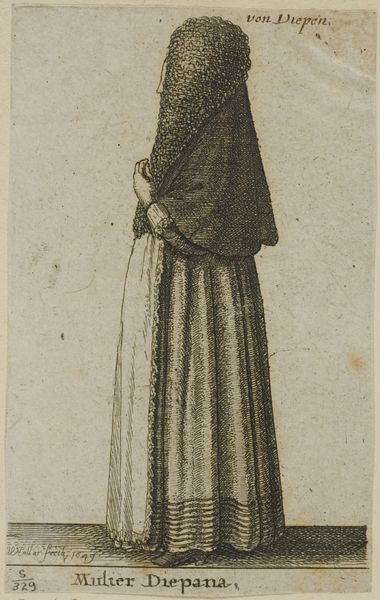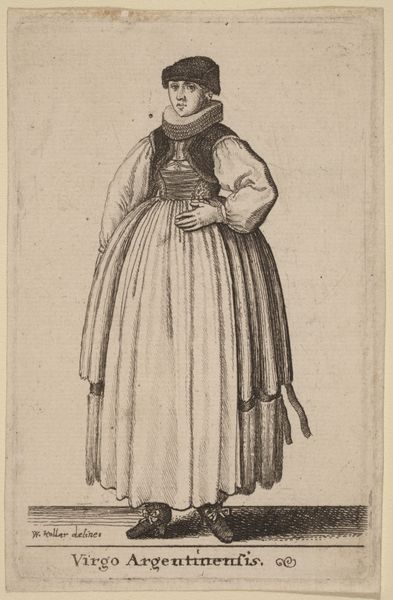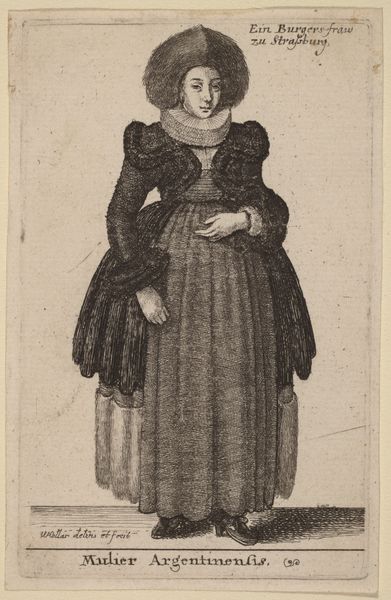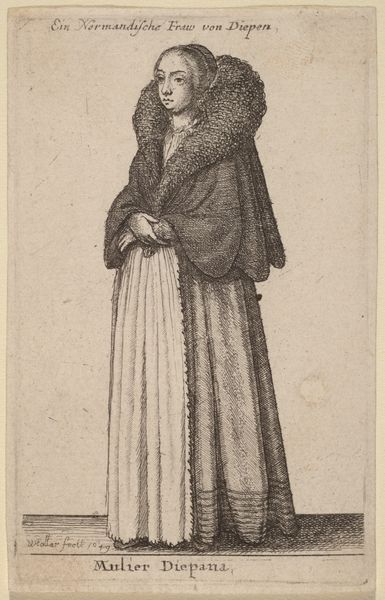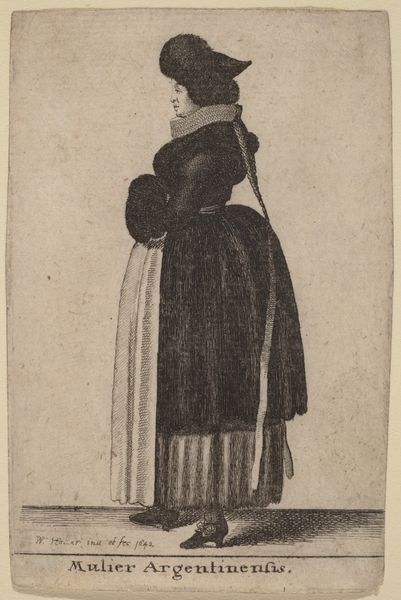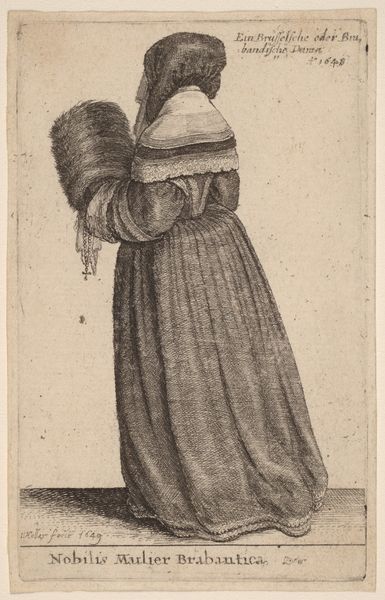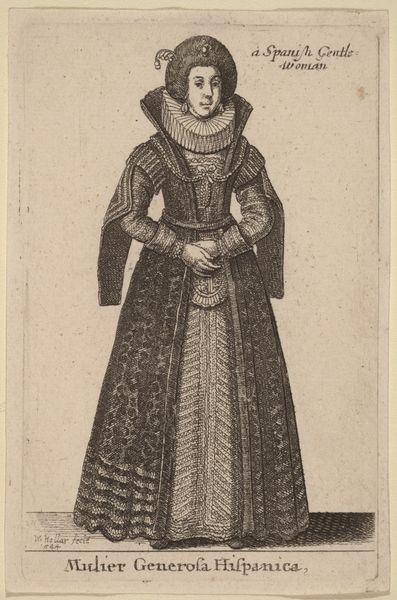
drawing, print, etching, paper
#
portrait
#
drawing
#
baroque
# print
#
etching
#
paper
#
genre-painting
#
history-painting
Dimensions: 91 × 59 mm (trimmed within or just outside platemark)
Copyright: Public Domain
Editor: Here we have Wenceslaus Hollar's "Strasbourg Woman in Wedding Dress," created sometime between 1644 and 1650. It's an etching on paper. The woman's expression seems so restrained, almost melancholy. What can you tell me about this image? Curator: It's interesting you picked up on that restraint. This piece gives us a peek into the complex social theatre of marriage in 17th-century Strasbourg. It is far removed from contemporary ideals of love as the primary driver in holy matrimony. What do you notice about her attire? Editor: Well, the dress and headpiece are very elaborate, suggesting wealth and status. Curator: Exactly. Marriage, especially for women, was a crucial tool for social and economic advancement. These detailed depictions of clothing in Hollar’s prints weren’t just about fashion; they communicated power. But look at how contained she is within these garments. Her body is almost entirely concealed. Can you see a tension there? Editor: I see what you mean. It's like the clothing is presenting a very controlled image, perhaps a symbol of the societal expectations placed upon her. Do you think her personal feelings were considered? Curator: That’s the vital question. Her individual desires, her agency, may have been secondary to these larger socio-political concerns. This print can open up a conversation about the historical constraints placed on women and the ways they were commodified. It forces us to consider gender and class dynamics. Editor: That’s given me a lot to think about. It’s unsettling to view marriage as a social transaction, but I understand this was very common for the period. Thanks! Curator: Indeed. Reflecting on the lived realities of women in the past gives us perspective on issues of representation and autonomy today.
Comments
No comments
Be the first to comment and join the conversation on the ultimate creative platform.
